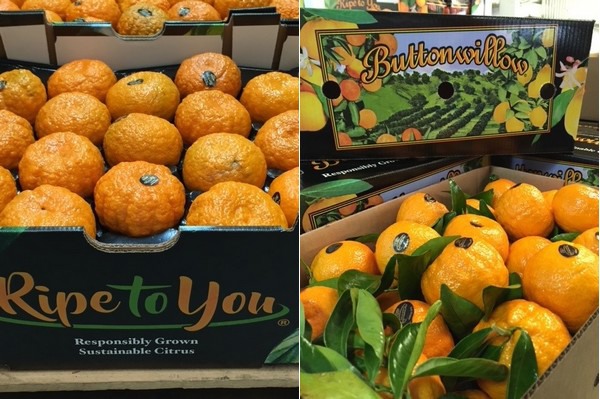The California mandarin season will likely end its tough season early.
“The supplies of mandarins have been dramatically light on the back side of the deal. Tangos and W. Murcotts are light and the crop seems to be getting lighter. We’re having fruit drop and poor quality so both are even lighter than expected,” says Eric Christensen with Fruition Sales - Ripe to You® based in Reedley, CA. The lighter crop is largely due to last summer’s heat wave. “Last year, much of the fruit was left on the trees longer into the bloom season and then it compromised the new set.”
Ripe to You handles nine different varieties of mandarins and is on its last three varieties after just finishing up the Pixie variety. “We still have Tangos and W. Murcotts and Gold Nuggets. Gold Nuggets may last a little longer. They have lost some favor in the marketplace due to their rind sensitivity but we’re still a big player in Gold Nugget,” says Christensen.
As for sizing of the fruit, Christensen says it’s all over the board with dramatic amounts of small, undersized fruit and now larger fruit is coming on. “So some are out of the peak size ranges which are the 20 series and into the 18 series. You don’t want to see many 10s and 15s per 5 lb. bag,” he says.
 Left: Gold Nugget mandarins; right: stem and leaf mandarins.
Left: Gold Nugget mandarins; right: stem and leaf mandarins.
Early May end
All of this means there will likely be an early end to the season around May 5th following a slightly earlier start in mid-January. Last year fruit was available into July.
Along with California fruit, there is Moroccan fruit on the West Coast and some Israeli Orri mandarins on the East coast. “And I wouldn’t be surprised if there was some Spanish fruit on the Eastern seaboard of Canada,” he says. “There are packers and sellers who don’t have a good foothold of volume here in the Central Valley of California so they count on these imports as part of their programs. And it’s pretty good fruit and it competes. Especially with the trucking costs to the East coast from the West. That’s $8,500-$10,000 for a truck,” says Christensen.
As for demand, it’s not been brisk on mandarins. “Prices are high, freight is high and trucks are hard to get,” he says. Contract pricing, which was reset in the first week of February, is 20 percent higher than last year while spot market pricing is between 15-20 percent higher.
And while prices aren’t expected to increase, input costs will. “We just got word that that our plastic prices are going up 30 percent. Corrugated is going up again--it ratcheted up at the start of the season--and freight is getting higher. People at home have less money to spend because they’re spending more on fuel prices. We have more challenges ahead but the future still looks bright for the mandarin deal,” says Christensen.
 For more information:
For more information:
Eric Christensen
Fruition Sales - Ripe to You
Tel: +1 (559) 626-7917
info@ripetoyou.com
https://www.ripetoyou.com/
